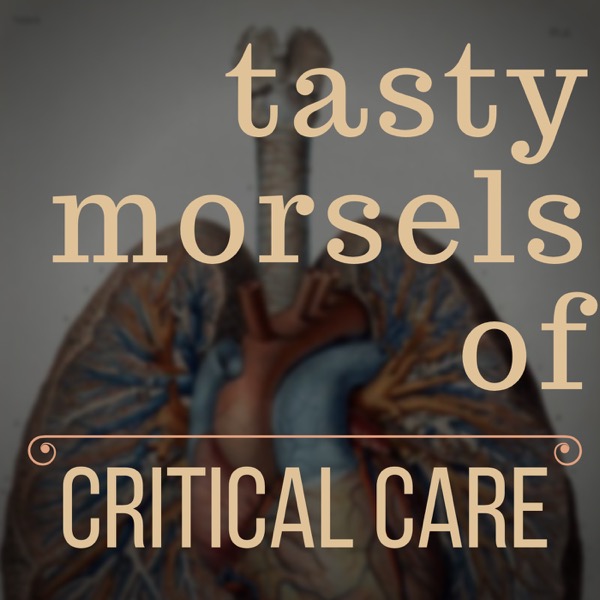Tasty Morsels of Critical Care 034 | Chemotherapy agents and intensive care
Tasty Morsels of Critical Care - A podcast by Andy Neill - Mondays

Welcome back to the tasty morsels of critical care podcast. A meandering monologue through critical care fellowship exam preparation. If you were tuning in to try and pick up some core exam level content then this is probably not it. However, it is what came up in my non-random, semi alphabetical by system, trawl through my notes that forms the basis for the order I write these in. We’re going to spend 5 minutes on chemo agents in the ICU. Roughly hewn from the stone tablet of Oh Chapter 46 on solid tumours in intensive care. This is perhaps not something that will be top of the list in exams and certainly for clinical practice you are not going to be prescribing any of these agents. However a passing familiarity with some of the commoner ones, (or at least the ones that are more likely to run the risk of an ICU admission) is probably worth while. Table 46.1 has a table that covers two pages of scrolling on my browser and includes many drugs that I have never heard of or can’t pronounce or both. Thankfully the next segment has a much smaller selection of “specific chemo induced toxicities” and we’ll try and cover at least that much today. First up – bleomycin lung injury. Bleomycin is actually an antimicrobial used in a variety of head and neck and gynae tumours and Hodgkins. The pneumonitis can occur in up to 40% (though the corresponding up to date article puts it at more like 15%) and can be fatal. There is generation of oxygen free radicals with corresponding fibrosing alveolitis that is actually worsened with oxygen therapy. If this sounds familiar, then the insecticide paraquat does a very similar thing but is, I suspect, much less useful in treating cancer. In terms of treatment it seems that just like in ARDS, the terms fibrosing alveolitis and high dose pulsed methyl pred are inexplicably connected. Second on our list is ifosfamide related neurotoxicity. Ifosfamide is an alkylating agent used in a broad range of tumours and is well known for causing an encephalopathy in 10-20% of patients. It is a diagnosis of context and exclusion. I have heard it discussed, if not diagnosed on several occasions by oncologists with patients in the ICU and one was even given methylene blue which is a somewhat established antidote of sorts through some mechanism of MAO activity. However it turns out that guidelines from the European Society for Medical Oncology specifically recommend against giving it so maybe forget i just said that and instead cite them in opposition to any oncologists wandering into your ICU with little blue vials. Coming in at number 3 is anthracycline related cardiomyopathy. There are a number of drugs in this category all ending in rubicin and seem to be used fairly widely. There are two parts to this. Firstly, there can be an acute cardiomyopathy, sometimes with arrhythmias that happens early and secondly, a more chronic cardiomyopathy that can happen months to years after the drug has been given. The mechanism has too many proposed options to be memorable but reactive oxygen species seem to have at least some role. Last but by no means least are the immunotherapy agents. This is chemo Jim, but not as we know it. Melanoma appears to be the poster child for the agents here. There seem to be a broad variety of agents and mechanisms that fall under the term immunotherapy but the check point inhibitors are probably the most well known. The immune system has various check points as such to stop the cellular militia getting too carried away. The check point inhibtors effectively remove these check points and let the immune system go wild on whatever foreign tumour antigen it can get its hands on. Mechanistically this is genius as a therapy but as you can imagine there can be a few issues with getting the g...
